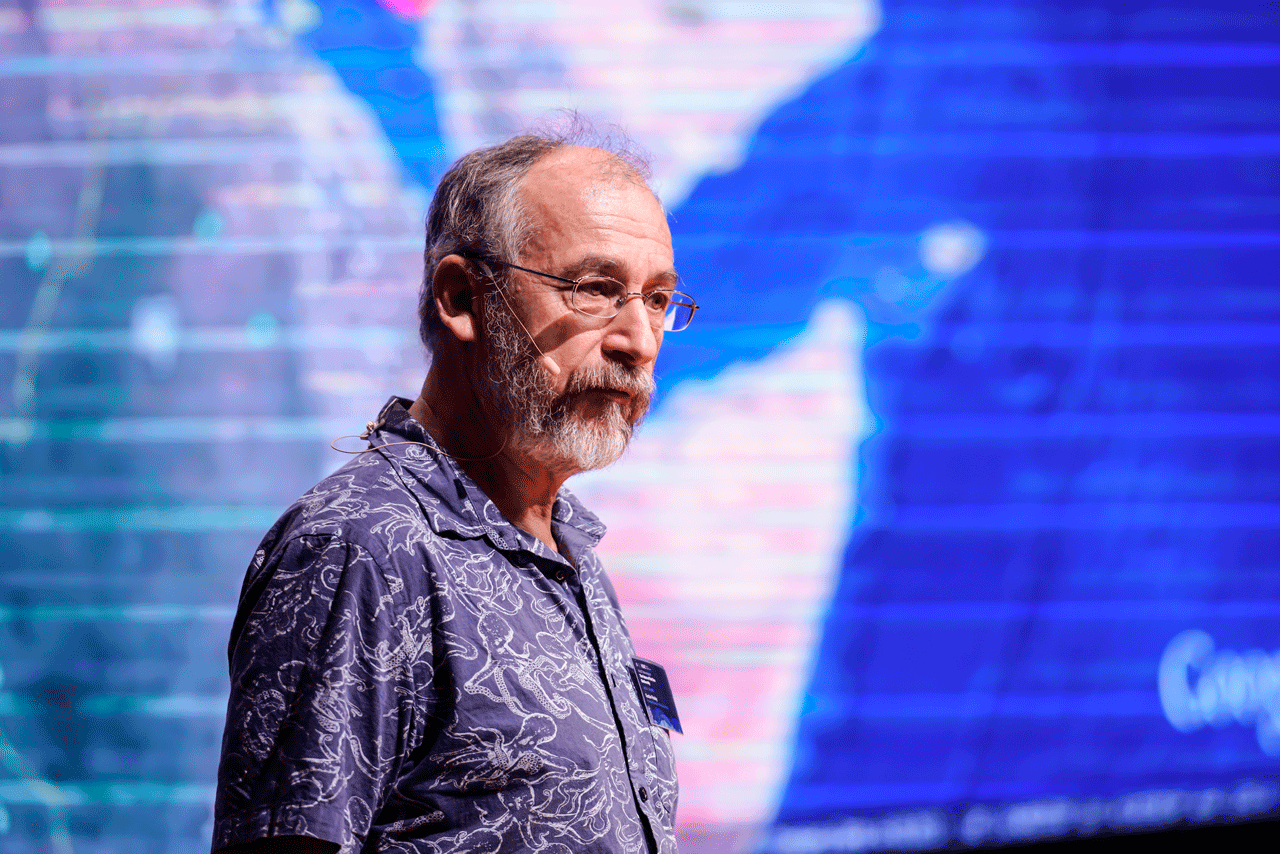Documenting the 'dodos' of tomorrow

Dr. Gustav Paulay, curator of invertebrates at the Florida Museum of Natural History, spoke on campus about marine biodiversity as part of the 2018 Enrichment in the Fall program on October 23. Photo by Andrea Bachofen-Echt.
By David Murphy, KAUST News
On October 23, as part of the University's 2018 Enrichment in the Fall program, Dr. Gustav Paulay, curator of invertebrates at the Florida Museum of Natural History (FLMNH), drew on his many years of marine malacology expertise to deliver an engaging keynote on marine biodiversity.
In his lecture introduction, Michael Berumen, acting director of the KAUST Red Sea Research Center and professor of marine science, described Paulay as "a walking encyclopedia of invertebrate knowledge."
"[Paulay's] aim is to make biodiversity more accessible to diverse audiences and in diverse applications. Overall, his work is super important. It really broadly helps all of us understand how diversity and distributions of marine life came to be," Berumen said.

'The estimated number of marine species is in the millions,' Dr. Gustav Paulay outlined during his 2018 Enrichment in the Fall keynote lecture on campus. Image courtesy of Shutterstock.
Documenting thousands to millions of species
Paulay's keynote address entitled "Mare Incognitum—How Little We Know About Coastal Biodiversity and How to Change That" discussed how—in spite of the current high-level knowledge of our oceans and seas—humans still do not know the order of magnitude of the planet's marine diversity. It is believed that there are approximately 250,000 described marine species globally, of which around 75 percent are invertebrates.
"The estimated number of [marine] species is in the millions...[W]hat we know is that we only know a fraction of what is out there," Paulay stated. "Of course, if you're interested in diversity, a lot of that diversity is in marine environments—on corals reefs—the most diverse habitats."
"[W]hen you do one of [the large-scale biodiversity] surveys, [you see] how incredibly effective they are," Paulay said. "A single survey can document literally thousands of species. Technology really speeds up how fast you can document things and how fast you can determine what they are. [T]his includes mass sampling, digital photography and using DNA to help identify species."

Dr. Gustav Paulay discussed marine biodiversity during his 2018 Enrichment in the Fall keynote lecture on October 23. Photo by Andrea Bachofen-Echt.
Collaboration leads to discovery
Paulay also touched on his lengthy research career spent carrying out surveys to document tens of thousands of marine species around the globe. He spoke of his fieldwork studies in the region focused on documenting the diverse—and sometimes unique—marine biota of the Arabian Peninsula and described collaborative research cruises held between KAUST and FLMNH in the Red Sea from 2012 to 2016. The cruises led to the discovery of some rare and previously uncategorized species of marine life.
"[With our expeditions,] we have about one to four people typically specializing in invert taxonomy per crew. We got about 7,000 specimens from these; about 30,000 photographs; and 2,00 species. [A]lso, we have a lot of material from comparative studies in Djibouti and from Oman," he noted.

Dr. Gustav Paulay from the Florida Museum of Natural History talked about taking part in fieldwork studies to document marine species during his 2018 Enrichment in the Fall keynote lecture. Photo by Andrea Bachofen-Echt.
"[Y]ou find a lot of cool animals, including Lobatolampea tetragona [one of the most bizarre, benthic, comb jellies in existence]. Some people think that these are the first branch of the animal kingdom—even below sponges. We have also been looking at sea cucumbers in the Red Sea, and there [are] a total of 63 species of Red Sea cucumbers recorded in the literature. We got about 42 of them—14 were new records and 16 were new species. Thirty-eight percent of those species that we have sufficient information on are endemic to the Red Sea," Paulay said.
Sharing today's knowledge
"Today, with the world changing as fast as it is, [studying and documenting marine biodiversity is] also really urgent because we are going to lose a lot of biodiversity. Ecosystems are going to be altered by the coming onslaught of all the changes that we as humans have brought on this planet," Paulay noted.
"The thing that drives me is—and I feel is one of the most compelling reasons for these surveys—is that we have to find out what lives on these reefs today if we're going to have the information to manage them as best as we can for tomorrow."

Dr. Gustav Paulay noted that 'we only know a fraction of what is out there' in the marine environment during his 2018 Enrichment in the Fall lecture. Photo by Andrea Bachofen-Echt.

